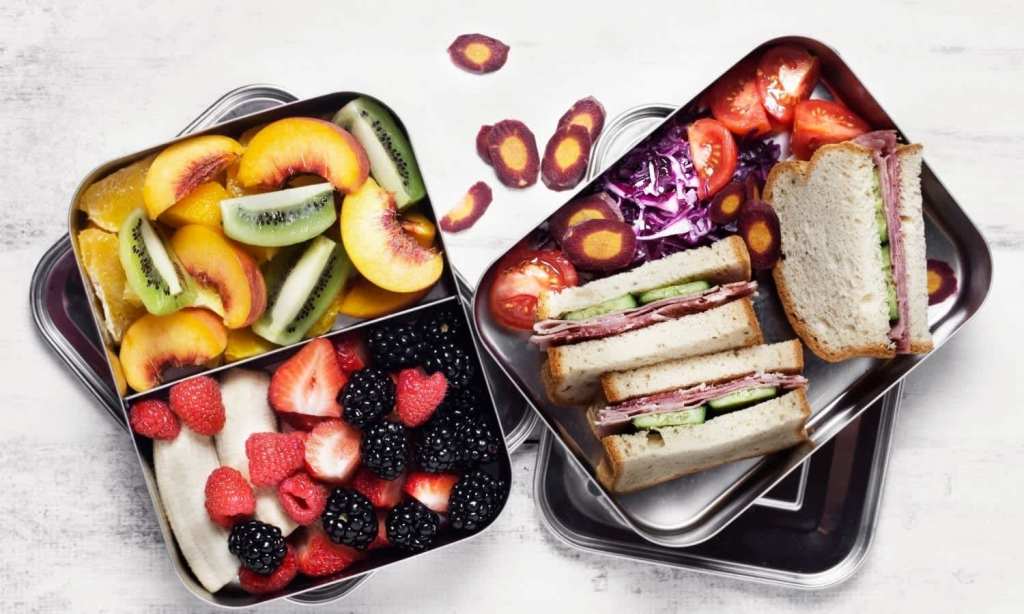Packing your lunch for work, or meal prepping if you are working from home, is one of the best ways to not only ensure you are feeding your body the healthiest food but also to ensure you’re saving some money, too.
Takeaway lunches are often laden with sugar, made with ingredients that are far from fresh and come in portion sizes that are either too big, leaving you uncomfortably full, or too small, leaving you hungry and wanting a second meal.
On the flip side, having your own homemade meals with foods that are good for you, not to mention reasonable portion sizes, will help you boost your mood, cope with stress and even sleep better.
So, how can we start to make more work lunches? The key is to plan and be prepared, says Gabrielle Newman, a Clinical Nutritionist, BHSc, and a Recipe Developer for The Fast 800, an online programme offering healthy recipes and meal plans, as well as a science-based framework for a healthy lifestyle.
“The biggest hurdles we see when it comes to packed lunches are not doing the preparation and losing motivation to organise your lunches at home,” says Newman. “Also, not having enough time in the morning to make lunch before work, and not feeling full and satisfied because your meals aren’t balanced with protein, fibre and healthy fats.”
As for how you should be building your work lunches, Newman has these suggestions to ensure you’re kept well-fuelled and satisfied:
Start With Greens
“Dark, leafy greens, like spinach and kale, have ample nutrients and have both been linked to improved heart health, weight loss and immunity. However, if using raw, kale can be a little tough so just be sure to massage with a little olive oil before using it as the base of a salad.
“Other great leaves are gem lettuce, rocket, chicory, swiss chard, watercress and romaine. This list is certainly not exhaustive; any leafy greens you enjoy will be a winner.”
Add Protein
“The downfall of many lunches is that they’re lacking in protein, which is often the reason they don’t keep you full for very long.
“Protein, which can be found in both animal and plant-based sources, is vitally important for growth, repair and the maintenance of muscle mass. It also helps to curb cravings throughout the day. Try eggs, chicken, cottage cheese, ricotta, tempeh, lentils or edamame beans.”
Include Healthy Fats
“Fats help keep you fuller for longer and also add flavour to your food. Fats also help with the absorption of fat-soluble vitamins like vitamin A, D, E and K. Monounsaturated fats come with a number of scientifically proven health benefits including weight loss, decreased inflammation, increased sensitivity to insulin and reduced risk of heart disease. You can find very high levels of monounsaturated fats in extra virgin olive oil, avocados, nuts and seeds.”
Add Some More Veg
“The more colours you have on your plate, the more nutrients. Adding vegetables, such as colourful capsicum or tomatoes can add plenty of vitamins and minerals to your lunch. Load up on non-starchy vegetables in a variety of colours.”
Add Some Extra Flavour
“If having a salad, try not to drench your salad in dressing, or buy store-bought ones laden with sugar, additives and preservatives. Salad dressings are absolutely delicious with just a few ingredients that you’ll probably already have in your cupboards.
“You can keep it simple with a drizzle of extra virgin olive oil and a squeeze of lemon juice or try this simple recipe: whisk together 1 tbsp extra virgin olive oil, 1 tsp apple cider vinegar, ½ tsp dijon or wholegrain mustard with salt and pepper – enjoy. If it’s a hot meal, add some herbs and spices to really make it sing.”
Balance Your Meal
“Ensure you’re following the principles of a Mediterranean-style diet — low in surgar and starchy carbs, while packed with disease-fighting nutrients — by having a portion of protein, some healthy fats and filling your plate (or lunch box) with a variety of non-starchy veg.
“The key to avoiding the 3pm slump is to eat foods that will keep you fuller for longer and keep your blood sugars stable. Have a glass of water and take a walk at 3pm — or whenever that slump usually hits — to boost your energy before you reach for a snack that you don’t really need.”
Read more stories from The Latch and subscribe to our email newsletter.Getty

